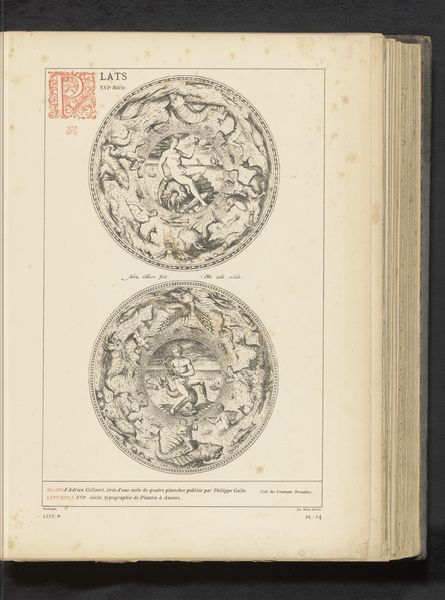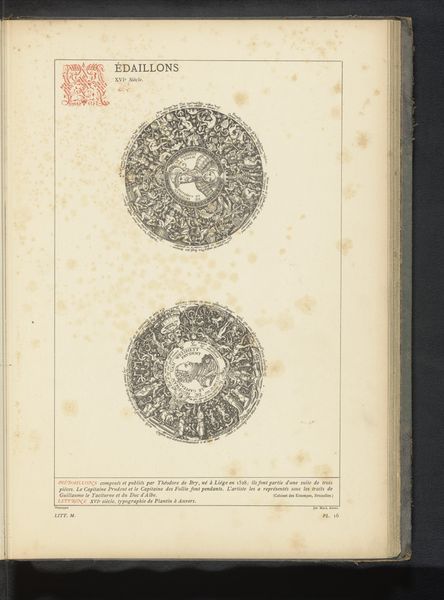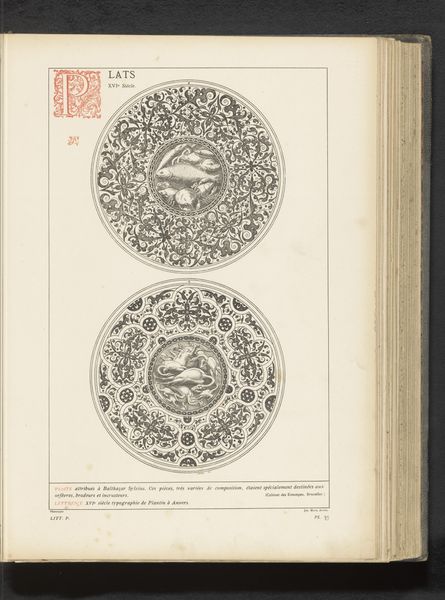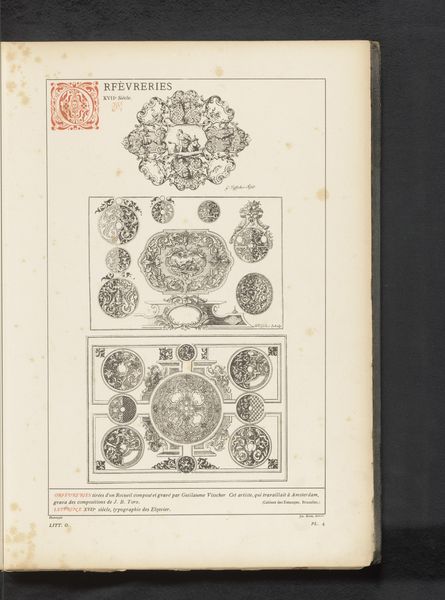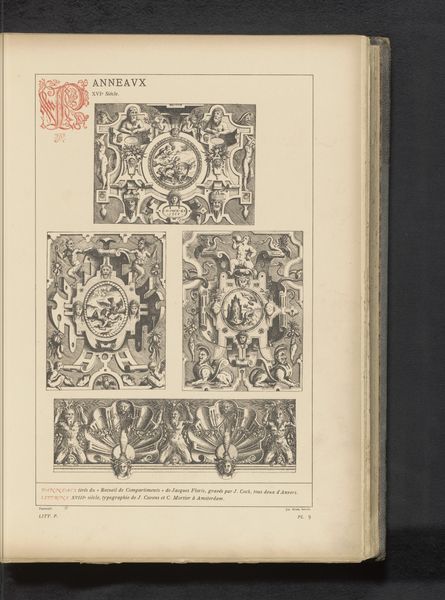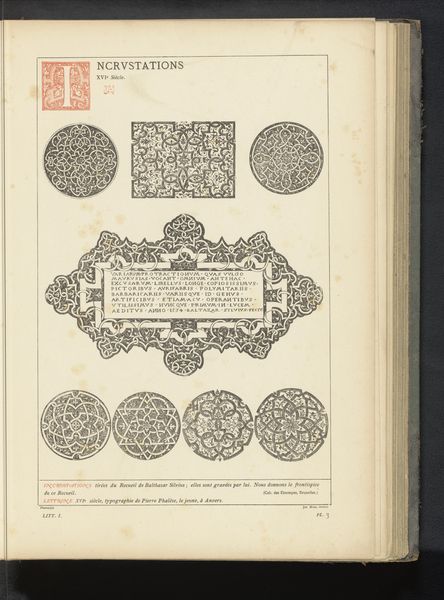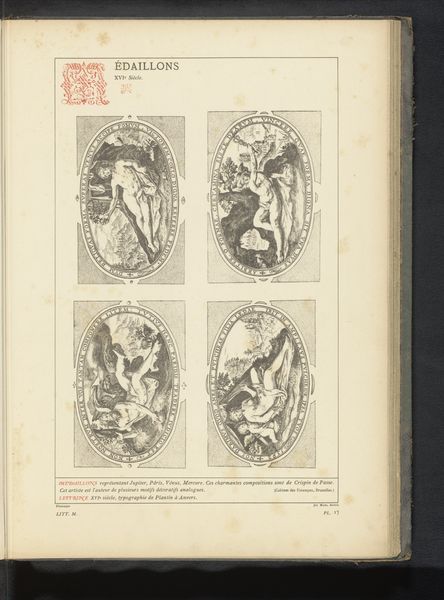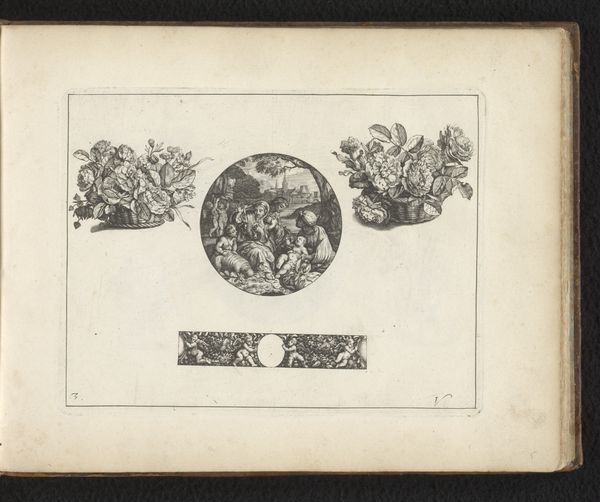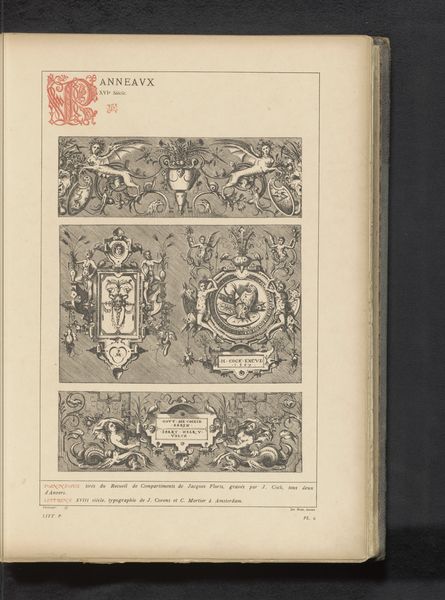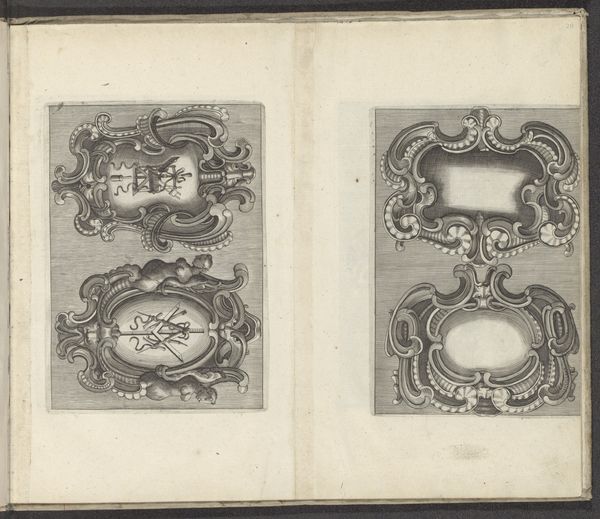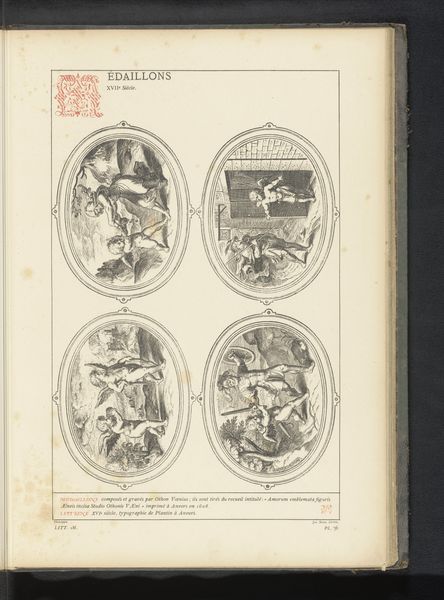
Reproductie van een prent van vier medaillons van de vier elementen door Crispijn van de Passe I before 1880
0:00
0:00
print, etching, engraving
# print
#
etching
#
figuration
#
11_renaissance
#
history-painting
#
engraving
Dimensions: height 345 mm, width 235 mm
Copyright: Rijks Museum: Open Domain
Curator: Take a look at this page from what appears to be an old book; it features an engraving titled "Reproductie van een prent van vier medaillons van de vier elementen door Crispijn van de Passe I," created before 1880. At first glance, what do you notice? Editor: The meticulous detail work is absolutely arresting; the whole arrangement looks like intricate clockwork or fantastical coins recovered from an ancient, submerged civilization. It also looks somewhat fragile and old. Curator: Yes, the engraving process lends itself to such sharp detail. This is, in essence, a reproduction of an earlier print, and each of the four medallions depicts one of the four classical elements: earth, air, fire, and water. Van de Passe, as an engraver and printmaker, skillfully uses line and shadow to bring them to life. Editor: And to underscore that point, this would have been an intensely material process: the crafting of the metal plate, the laborious act of cutting lines into it to hold the ink. Every stage dependent on very specific expertise and physical craft. I love imagining the workshop setting—the smell of inks, the press—really a collective endeavor. Curator: Absolutely, and let's also reflect on the broader societal and symbolic context that the artwork emerges from. Think about the relationship between classical learning and craft traditions, for instance; the popularity of allegorical imagery; and perhaps even alchemical ideas swirling at that time. All this information gives our understanding layers. The artist's voice is subtly present and that gives me the feeling of the connection between people and culture. Editor: That’s right, while seemingly esoteric or “high-art,” each stage in making these prints involves intensely physical labor. From mining to processing the materials, engraving the plates, mixing inks. That labor connects directly with both land and environment. What looks delicate now had tough origins. Curator: I think looking at it from both directions—from the conceptual and historical standpoint and also through this intensely tactile, material process—helps us truly appreciate the skill and depth embedded within this reproduction. Editor: Precisely, it shifts the focus from purely aesthetic appreciation to recognizing the many invisible hands—and raw resources—that make even the most refined artwork possible.
Comments
No comments
Be the first to comment and join the conversation on the ultimate creative platform.
